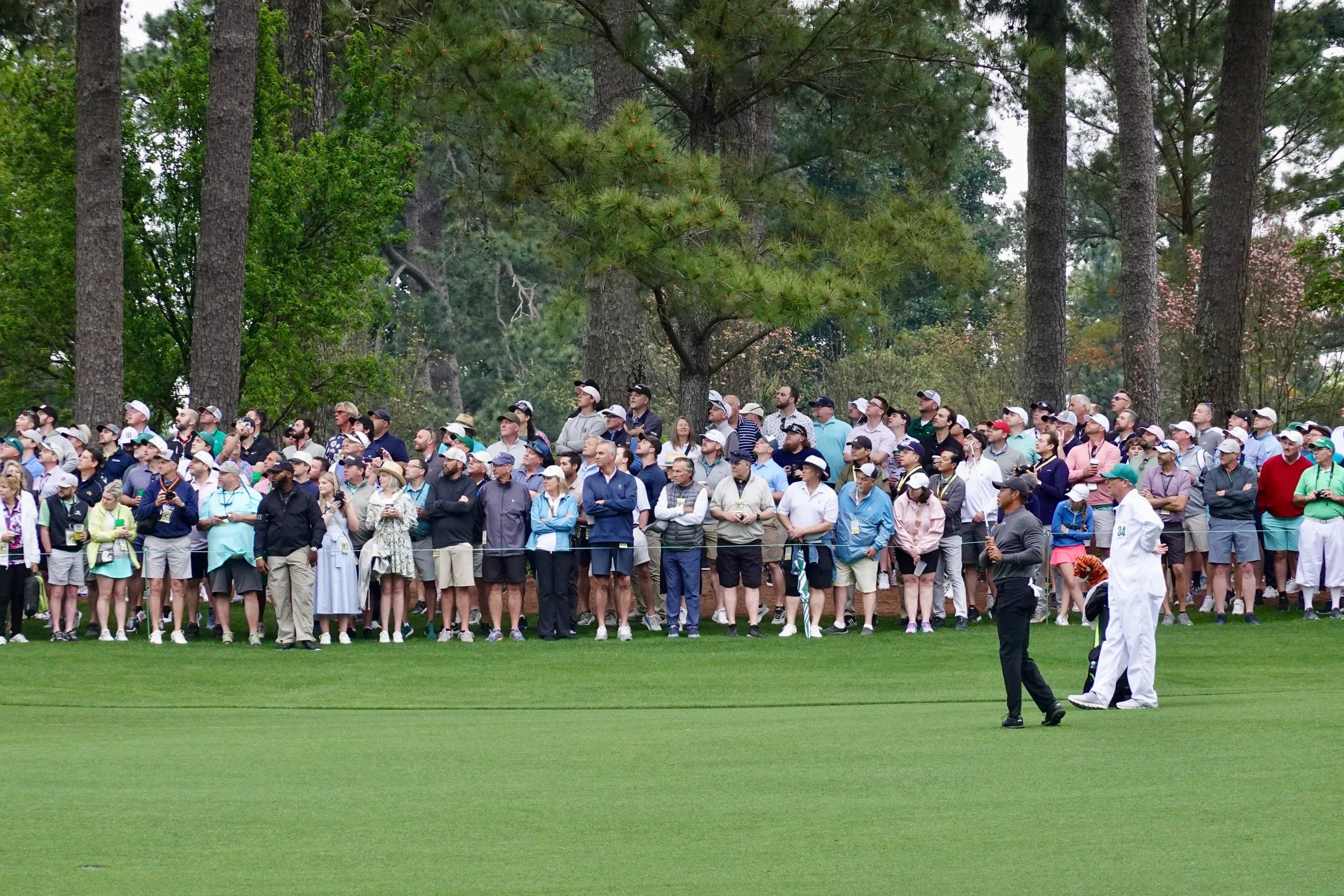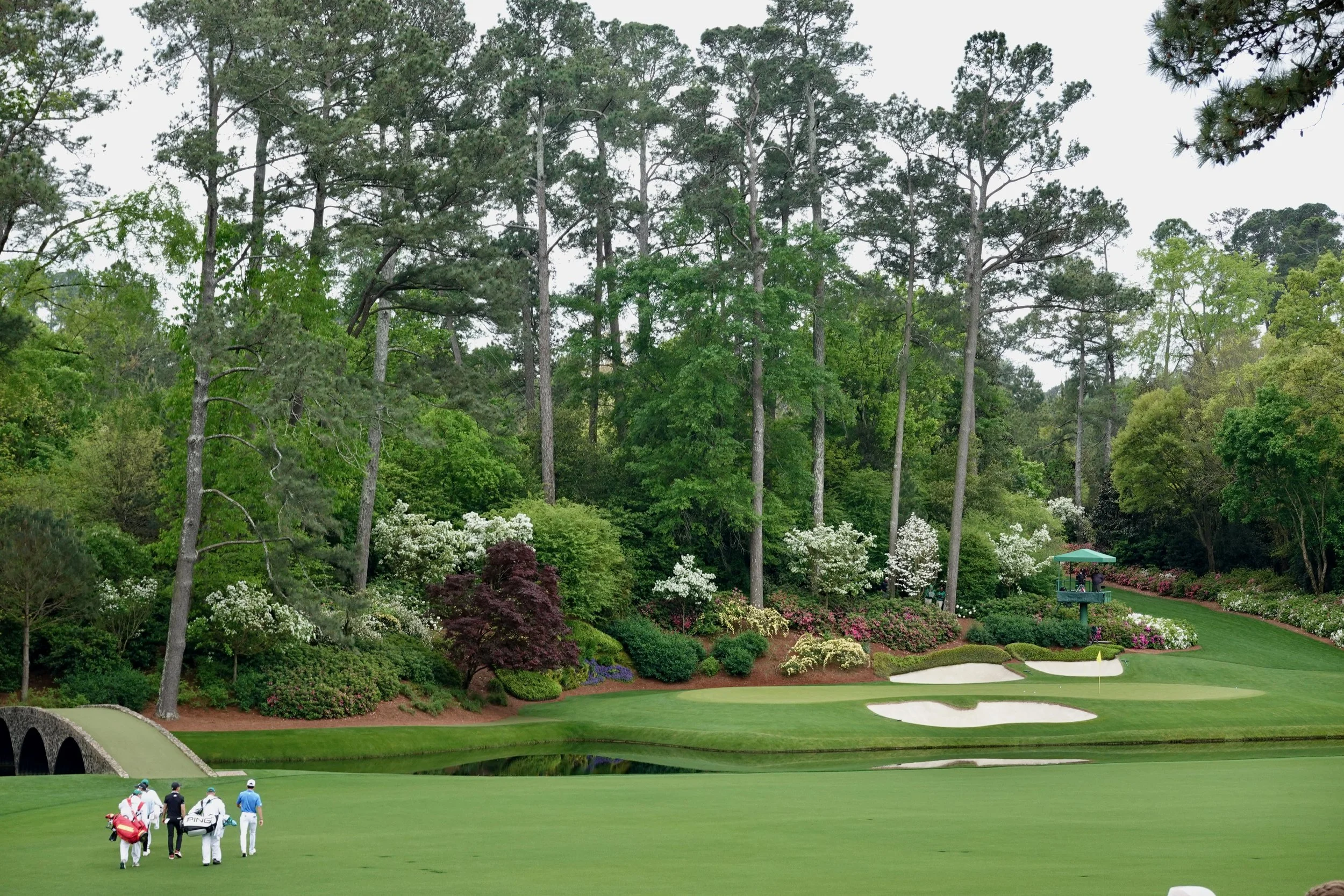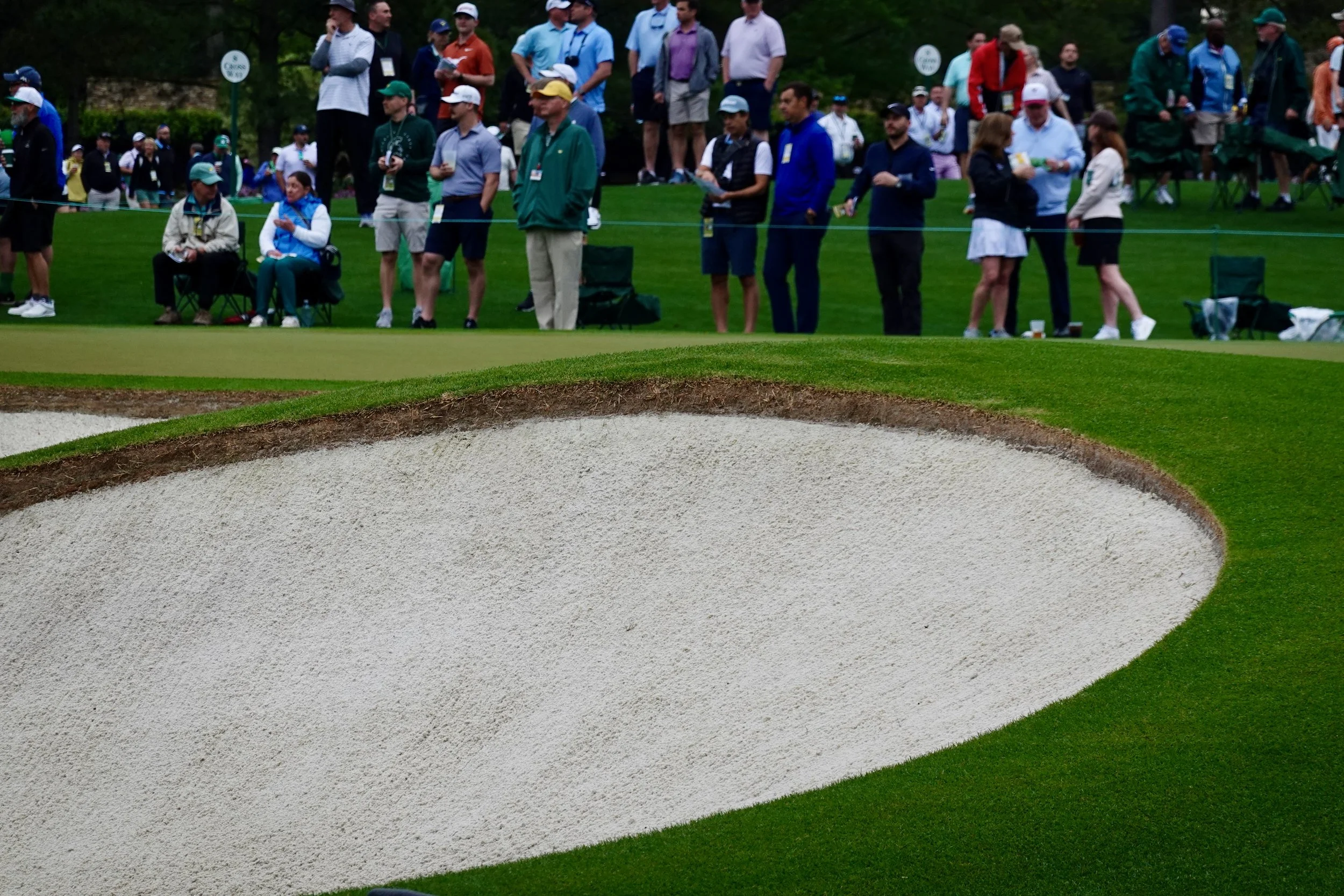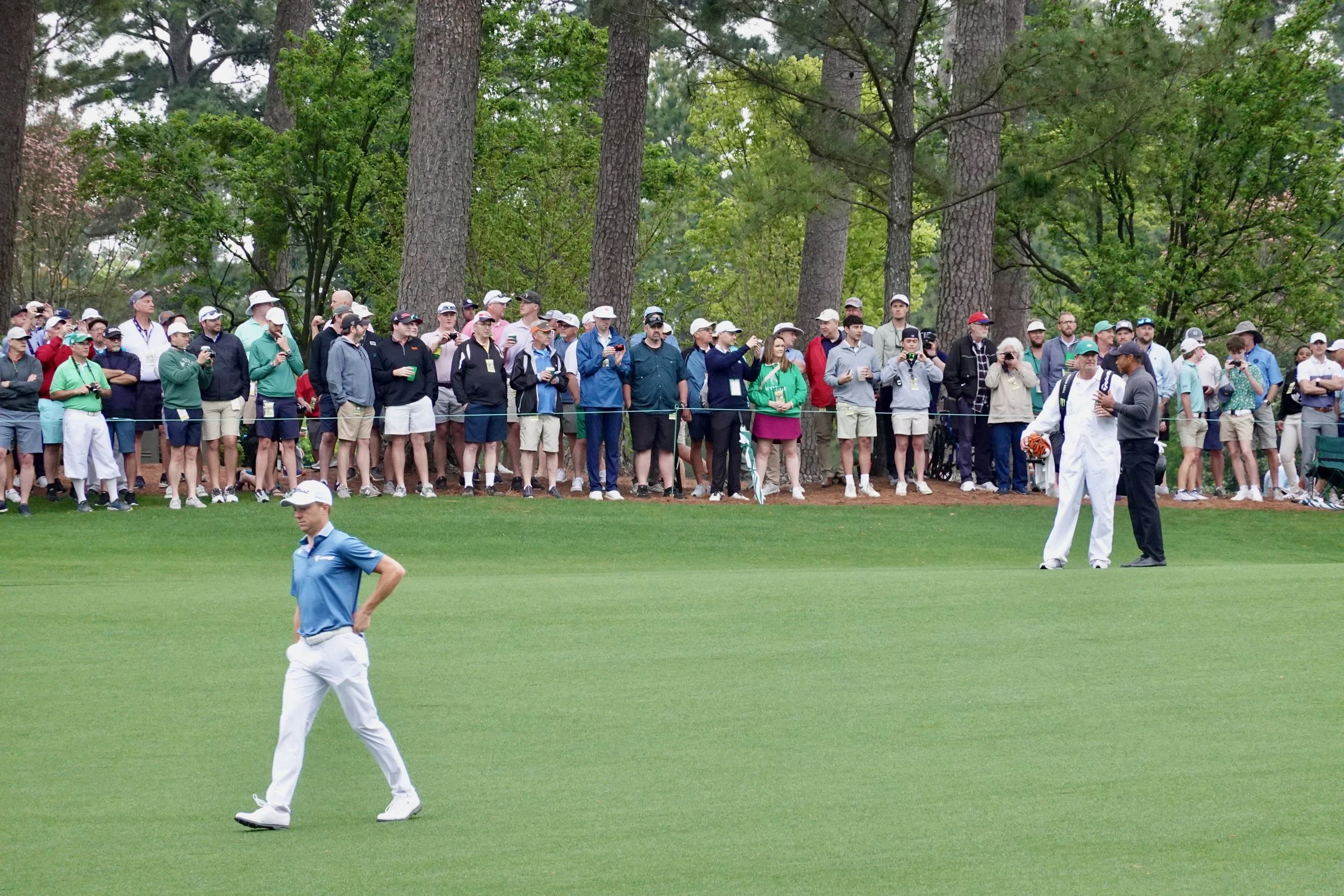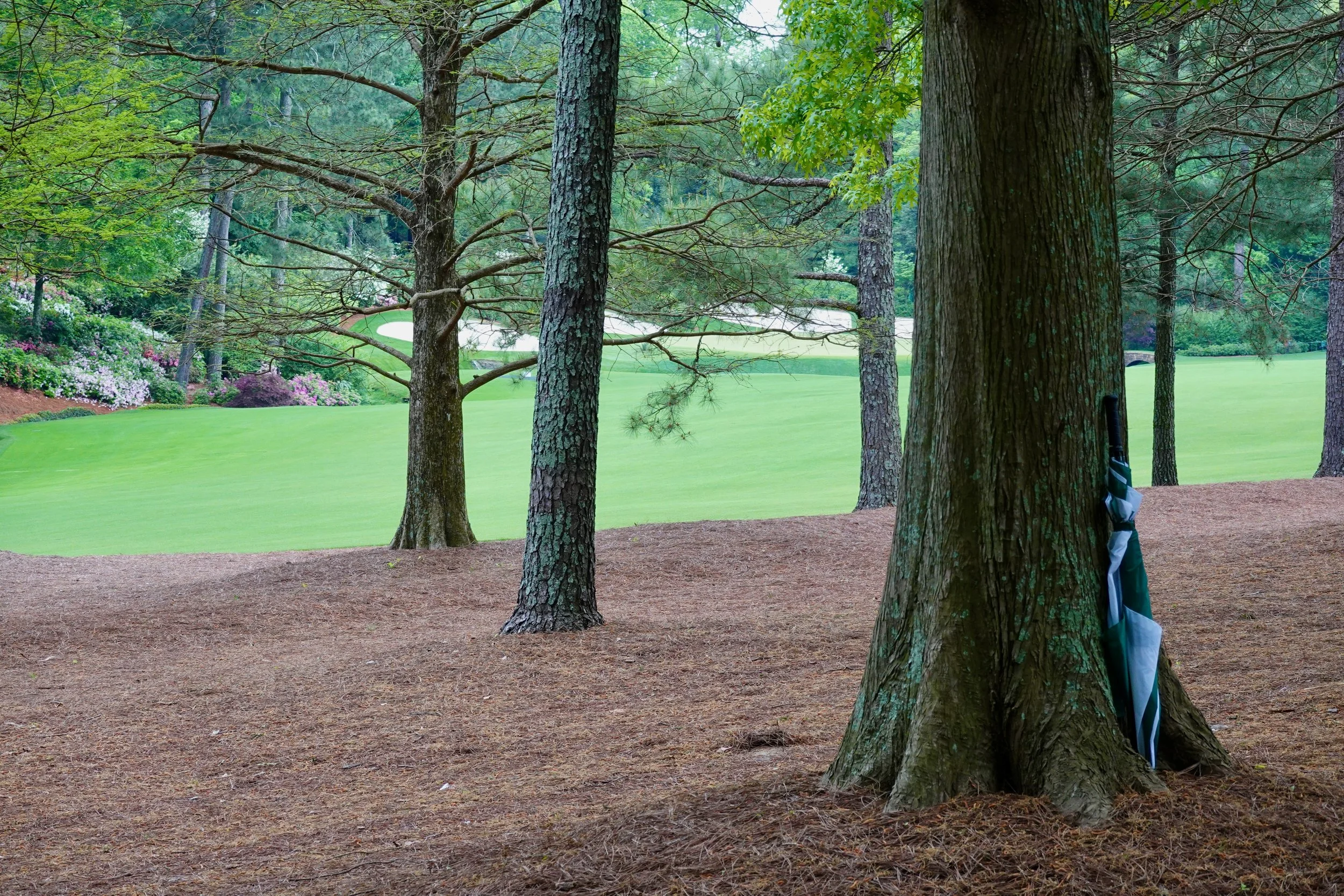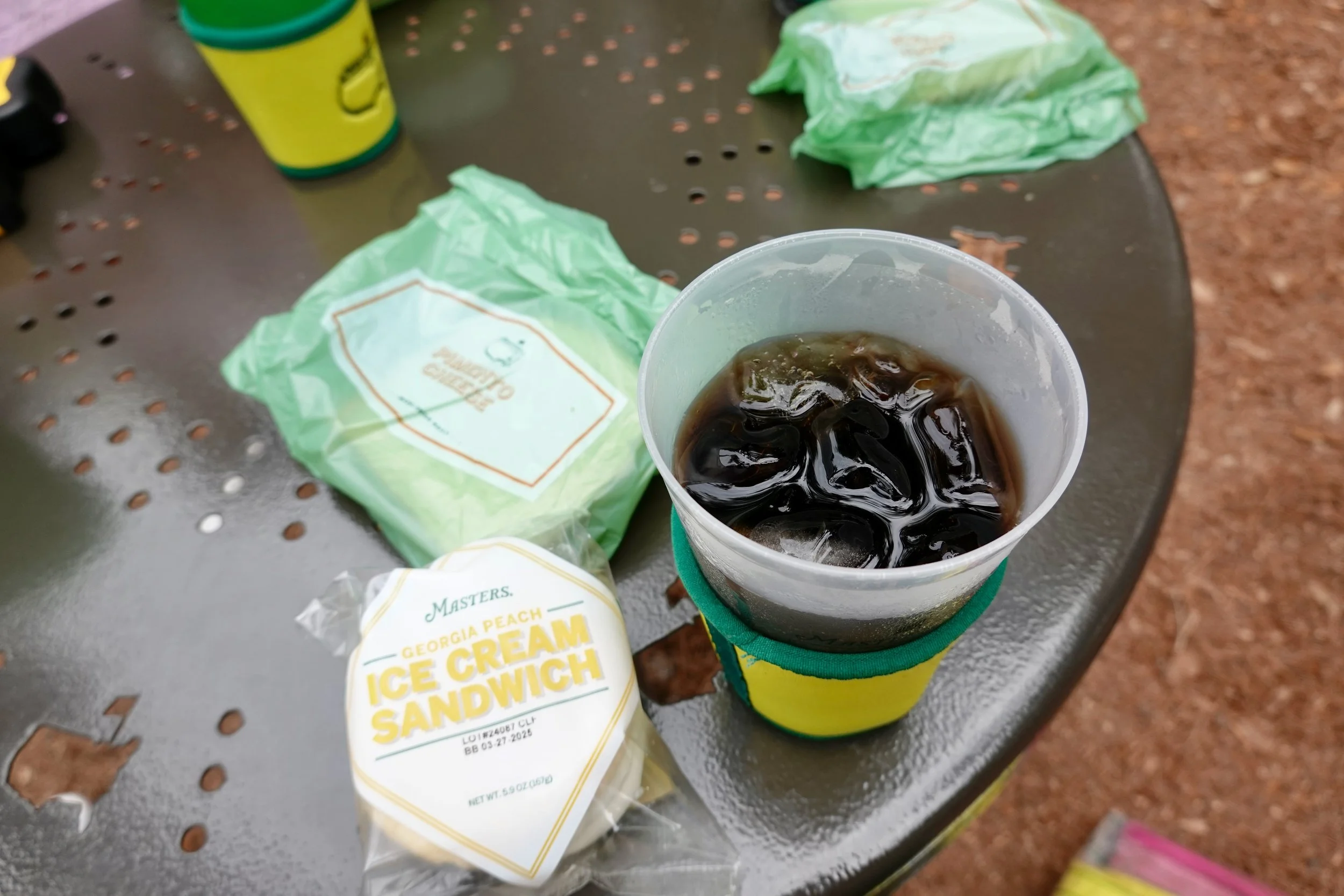“I always like going south.
Somehow, it feels like going downhill.”
(Treebeard, The Lord of the Rings)
Amen Corner is not where I expected the melancholy to kick in.
On the holiest ground at America’s most revered golf course, the mass of patrons typically winds with the land beneath them: down the hillside along the 11th hole and green, swelling behind the 12th tee, before turning rightward again up the side of the 13th fairway — a dogleg of quiet, green humanity. The bend in that elbow — directly behind the 12th tee — is the most crowded, with views of both Amen Corner’s greens and, if you crane your neck hard enough, a glimpse of the 13th green out the corner of your eye.
By late Tuesday afternoon, groups from the day’s practice rounds had finished passing through, and the mass had thinned to the congregation’s truest pilgrims. Folding chairs placed orderly but quickly that morning were mostly empty. A few patrons remained in the stands behind the 12th tee, but mostly the place took on the air of a polite, not-too-crowded cocktail party. One dumb fool sat slumped in his chair along No. 13, slurring his words with a stack of two-too-many plastic Masters cups at his feet. Smylie Kaufman walked through uninterrupted, took notes for a few minutes, and then left. Most stood and chatted about whatever it is people chat about when not particularly concerned with saying anything important.
And there I stood too, with a childhood friend and fellow pilgrim at my side. Other than a few musings that tumbled out — “What a place;” “Nothing like it;” that sort of thing — we just stood and looked at it all.
Ten minutes turned to 20 minutes. The sky had been overcast all day, but the light grey clouds had thinned just enough to betray that the sun was closer to the treetops than I wanted. This was our second time to visit Amen Corner that day, this time with a crowd much smaller than the one that earlier had watched Jose Maria Olazábal politely endure Bubba Watson’s presence for several minutes on the 11th green. If we were going to finish our second walk of Augusta National, we needed to leave. But neither of us could bear to say it, much less take that first step away. How do you bear to leave so beloved a place that you might never see again?
Nowhere more than at Amen Corner does Augusta National distill the paradox of being a Masters patron: the place everyone wants to see with their own two eyes, with a longing inspired by decades of nothing more than seeing it on TV for a few days each spring. Augusta National is enduring. Youngest though it is among golf’s four majors, the Masters is somehow eternal.
And yet, change — of all things — is this place’s only constant. In those galleries — both the thick one from the morning, and the lightly scattered one in late afternoon — many were here for the first time. Others brought with them eyes that had seen it many times and have watched the endless change carried through it by the years: green contours and bunker edges tinkered with again and again, and young players who return so many times that we realize one day they’re no longer young.
Each of the patrons, to a woman and man, aches with the hope to be here again. For most, though, this is the last afternoon they will ever see this place.
That’s where the melancholy kicks in.
I can't claim to have taken in all four of golf’s majors in person. I can attest to the PGA Championship’s dullness, and to the camaraderie of the Open Championship — which is to say I know just enough to know how little I know. But if that knowledge includes anything at all, it is that if there is a Heaven, it must look something like this. Nowhere I’ve set foot commands the awe that Augusta National inspires. There’s nothing new to be written on Augusta National’s grandeur. All I can tell is my part, which is that no other sporting venue in the world has so much more to see and feel than a single day will allow.
We did our best.
I’d not seen this place with my own eyes in 11 years — long enough to know that the next time might never come. For my friend, it had been nearly a full quarter-century — long enough for those young faces to have grown old, our own included. We agreed that the only responsible way to spend the day was to see as much as possible for as long as possible, so we walked the course twice: first in order, and then backward in the afternoon, stopping each time to catch a few of each green’s rumples and turns, before looking back down the fairway to imagine the approach shots best suited for the moment.
We saw Tiger Woods and Justin Thomas make approach shots into the third green — Tiger with the conservative play of a short iron from the right side of the fairway, and Thomas from the younger man’s play of a pitch shot following a blistering drive over the hole’s fairway bunkers. We saw Justin Rose and his caddie discover the sixth hole’s change: a new collection area guarding the green’s already treacherous back-right side. (“See?” the caddie said to Rose, pointing at his yardage book to notes from years gone by; “I had that marked as OK.”) We saw Bryson DeChambeau offer over-rehearsed smiles and waves to patrons like a third-rate local politician, before nuking a drive off the first tee. We saw Phil Mickelson grinding on the practice putting green, age and weight loss making him look more and more like a Spider-Man nemesis as the years go by. We saw Michael Greller, alone, rolling balls into early evening across six-foot stretches of the second green, watching closely for any unexpected turns or wobbles.
Mostly, though, we wanted to watch the place itself.
We watched a few groups come through No. 16, heckled by the gallery to “skip it” (as if any of them needed to be reminded). We found the trampled patch of pine straw along No. 10 where Bubba Watson, 11 years earlier, fired the snap-hook of a lifetime through a birdcage made of pines. We stood at nearly every members tee box, eyeing tee shots as mere mortals do and wondering which might give us a realistic chance at par (No. 6 alone, if you’re wondering). And we spent those 20 quiet minutes just staring at Amen Corner — a sight seared into my mind on the Tuesday of a lifetime that, for all but me and few other lucky thousand, was just a weekday. I even grabbed the last pimento cheese sandwich and ice cream sandwich sold all day at the North Gate concessions tent.
Even after 11 years, much of it was familiar. But a middle-aged father, waist-deep in his mid-40s, sees different things than an early-30s newlywed, even when they look at the same things. Most of it defies words. What doesn’t, though, is the reminder running through it all that our time here — at Augusta, and in this world — is short. There are not enough trips to the Masters, either in person or in our minds, that one lifetime can fit into itself. For all the Masters’ unique qualities, the greatest is its paradox: its rich green and soft breezes bring with them each spring a renewal of life, but also a reminder that life cannot be renewed forever.
I cannot say one way or another whether the Masters is golf’s greatest ritual. What I can say is that nowhere — not Pinehurst, not Pebble Beach, not even St. Andrews — both stirs my heart and breaks it like Augusta National. With any luck, I’ve not yet lived long enough to have seen this place for the last time. But if I have, then I have nonetheless felt something here.
Is that not life’s most important point, and perhaps its only point? To see a place or a person that carries you to the edges of your heart and back again, that teaches you the urgency of it all? I have felt alive many times on a golf course. But nowhere more than Augusta National has shown me the wonder of being alive.
I won’t project my emotions onto others. That’s sappy. But every Sunday afternoon when a Masters champion slips on a green jacket, I’ll remember an irony that Augusta National teaches: that despite the moment’s pageantry, it’s the moments before the climax that matter most.
. . .
You might also enjoy reading…

